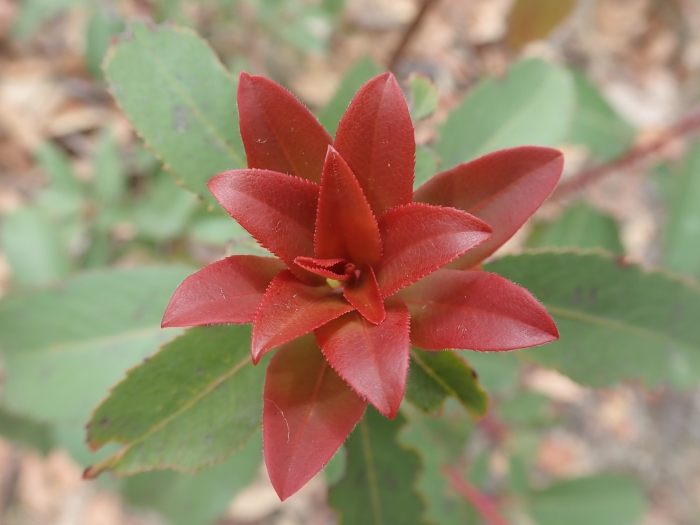Arizona Madrone
(Arbutus arizonica)
Arizona Madrone (Arbutus arizonica)
/
/

Nolan Exe
CC BY 4.0
Image By:
Nolan Exe
Recorded By:
Copyright:
CC BY 4.0
Copyright Notice:
Photo by: Nolan Exe | License Type: CC BY 4.0 | License URL: http://creativecommons.org/licenses/by/4.0/ | Rights Holder: Nolan Exe | Publisher: iNaturalist | Date Created: 2021-04-28T01:11:09-07:00 |




















































Estimated Native Range
Summary
Arbutus arizonica, commonly known as Arizona Madrone, is an evergreen tree native to the chaparral, oak woodlands, and pine forests of the Southwestern USA, particularly Arizona, and extending into Mexico. This species typically grows to a height of 35-50 feet (11-15 meters) and a width of 30-40 feet (9-12 meters), featuring a broad, irregular crown. The Arizona Madrone has smooth, reddish-brown bark that peels away to reveal a creamy white underbark, creating a striking appearance. Its leaves are dark green and leathery, and it produces clusters of small, bell-shaped white flowers in the spring, followed by orange-red berries that are attractive to birds and other wildlife.
The Arizona Madrone is valued for its ornamental bark, evergreen foliage, and spring flowers, which add year-round interest to the landscape. It is used in native plant gardens, as a specimen tree, and for reforestation in its native range. This tree is drought-tolerant once established, requiring low amounts of water, and it prefers well-drained soils, including rocky or sandy types. It thrives in full sun but can tolerate partial shade. While generally low-maintenance, it can be susceptible to root rot if overwatered or planted in poorly drained soils. Gardeners should be aware that the Arizona Madrone does not transplant well due to its sensitive root system, so it is best to plant it in a permanent location from a young age.CC BY-SA 4.0
The Arizona Madrone is valued for its ornamental bark, evergreen foliage, and spring flowers, which add year-round interest to the landscape. It is used in native plant gardens, as a specimen tree, and for reforestation in its native range. This tree is drought-tolerant once established, requiring low amounts of water, and it prefers well-drained soils, including rocky or sandy types. It thrives in full sun but can tolerate partial shade. While generally low-maintenance, it can be susceptible to root rot if overwatered or planted in poorly drained soils. Gardeners should be aware that the Arizona Madrone does not transplant well due to its sensitive root system, so it is best to plant it in a permanent location from a young age.CC BY-SA 4.0
Plant Description
- Plant Type: Tree
- Height: 35-50 feet
- Width: 30-40 feet
- Growth Rate: Slow
- Flower Color: White
- Flowering Season: Spring
- Leaf Retention: Evergreen
Growth Requirements
- Sun: Full Sun
- Water: Low
- Drainage: Fast, Medium
Common Uses
Bee Garden, Bird Garden, Butterfly Garden, Drought Tolerant, Edible*Disclaimer: Easyscape's listed plant edibility is for informational use. Always verify the safety and proper identification of any plant before consumption., Hummingbird Garden, Low Maintenance, Showy Flowers
Natural Habitat
Native to chaparral, oak woodlands, and pine forests of the Southwestern USA and Mexico
Other Names
Common Names:
Scientific Names: , Arbutus arizonica, Arbutus xalapensis var. arizonica, Arbutus xalapensis subsp. arizonica,
GBIF Accepted Name: Arbutus arizonica (A.Gray) Sarg.